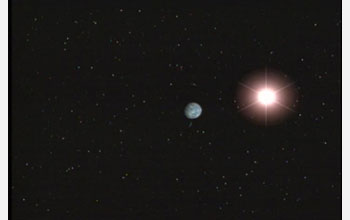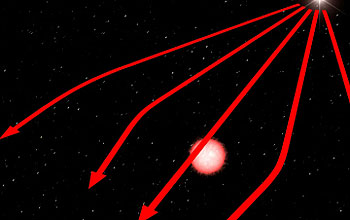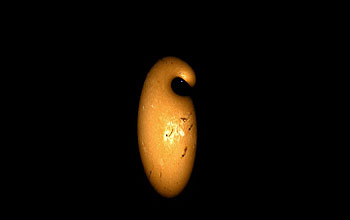All Images


Press Release 08-093
Small Planet, Small Star

Newly discovered extrasolar planet is the smallest known and has smallest host star
Back to article | Note about images
 |
Artist's conception of the newly discovered planet MOA-2007-BLG-192Lb orbiting a brown dwarf "star" with a mass of only 6 percent of that of the Sun. Theory suggests that the 3-Earth-mass planet is made primarily of rock and ice. Observational and theoretical studies of brown dwarfs reveal that they have a magenta color due to absorption by elements such as sodium and potassium in their atmospheres. If the host star has a mass of 9 percent of that of the Sun, at the other end of the margin of error for the new microlensing data, the star would be a red dwarf about 100 times brighter than the brown dwarf, but 1000 times fainter than the Sun.
Credit: NASA's Exoplanet Exploration Program |
Download the high-resolution JPG version of the image. (2.9 MB)
|
Use your mouse to right-click (or Ctrl-click on a Mac) the link above and choose the option that will save the file or target to your computer.
|
 |
 View video View video
David Bennett, associate professor of physics at the University of Notre Dame, discusses the most recent extrasolar planet discovery using the microlensing method.
Credit: National Science Foundation / University of Notre Dame
|
 |
 View video View video
This animation explains gravitational microlensing.
Credit: Trent Schindler, National Science Foundation
|
 |
 View video View video
This animation explains how gravitational microlensing detects planets.
Credit: Andrew Williams, University of Western Australia / Trent Schindler, National Science Foundation
|
|





